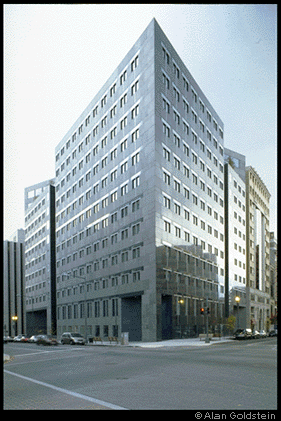A solution for the overtaxing of properties in neighborhood commercial districts

Should a rowhouse type building used for retail purposes in a neighborhood commercial district (this building is on H Street NE) ...
Create a more nuanced property tax classification system, which treats office buildings in places like downtown, NoMA, Dupont Circle, the West End, M Street SE, etc., differently from commercial buildings used for retail in places like Capitol Hill, Brookland, Takoma, etc.
The current classification system doesn't do this. There are three types of property: residential, commercial, and vacant, and the commercial property classification has two tranches, for properties worth more or less than $3 million.
What happens is that the process, weighted towards buildings in the Central Business District, and a market that is not local, but one with national and international actors, treats all property, in effect, as if it could be downtown office buildings.
---------
I had a letter in the Washington Post about this a couple years ago:
Tax Policy Hurts D.C.'s Local Businesses,
A July 20 Metro Article ["Feeling the Pinch of D.C.'s Prosperity: Small Businesses Cry Out for Relief From Rapid Rise in Property Taxes"] inadequately explained why tax assessments are rising for small commercial property owners in the District.
Regardless of buildings' locations and use, the D.C. Office of Tax and Revenue values [all] commercial buildings as if they could be converted into downtown office buildings. If the purpose is to turn the entire city over to office buildings and retail chains, then this property tax assessment methodology is working.
The market for downtown property is not local; it involves national and international developers, lenders, and portfolio investors. The market for small-footprint buildings in neighborhood commercial districts is local--in terms of property owners, investors, tenants, sales potential and rents. The solution is simple: differentiated tax assessment methods. The legislative focus on property tax abatements or tax caps fails to address this fact.
As a result, locally owned businesses will continue to close or relocate to the suburbs, while more and more of the retail identity and uniqueness of the District is lost and the city's retail landscape becomes reshaped into yet another mall, albeit outdoors, featuring national brands.
------------------
And note that DC's small building footprints for commercial property, in this case office buildings, and the constant demand for space by businesses willing to pay high prices in return for convenient access to the federal government -- law firms, lobbyists, certain trade associations, etc. -- mean that most other uses will be crowded out. (It's an economics-based reason for considering lifting the building height limit.)
This results in the overvaluation for tax purposes of commercial property outside of the ever expanding "Central" Business District (+ Georgetown and Friendship Heights).
As a result, asking prices for rents in neighborhood commercial districts 60% to 100% higher than what the rents should be, based upon the revenue potential of the building in use as a retail business (this is calculated on the basis of gross revenue/sales per square foot).
And it's why for the most part, most neighborhood commercial districts continue to be unsuccessful. They can't retain and/or develop quality businesses, because the underlying economics of the business model don't work--for the most part--because assessments and rents are too high.
I have been writing about this since 2005. See:
- Displacement of retail businesses through increasing property tax assessments
- Forcing Displacement by the disconnection of tax assessment models from public policy goals
- Globalization of the DC real estate market catches neighborhood commercial districts up in the wake
- Avoiding the real problem with DC's property tax assessment methodologies
- The hot real estate market Downtown and Georgetown
- Even more on commercial property tax assessment policies

pay property taxes on the same basis as a commercial office building in the city's Central Business District?
Labels: commercial district revitalization, formula retail, property tax assessment methodologies, real estate, real estate development, retail



0 Comments:
Post a Comment
<< Home